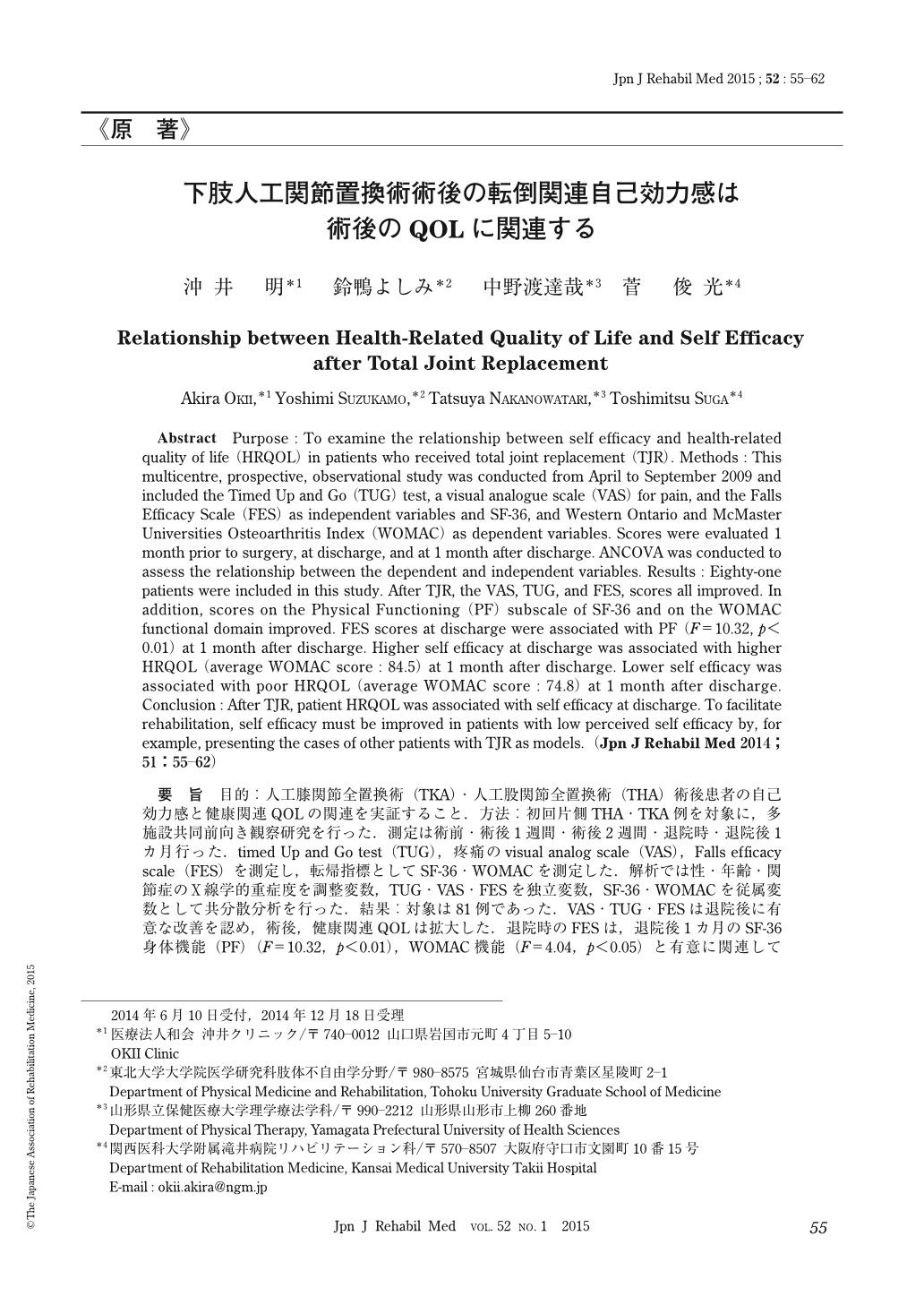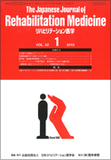Japanese
English
- 販売していません
- Abstract 文献概要
- 1ページ目 Look Inside
- 参考文献 Reference
要旨 目的:人工膝関節全置換術(TKA)・人工股関節全置換術(THA)術後患者の自己効力感と健康関連QOLの関連を実証すること.方法:初回片側THA・TKA例を対象に,多施設共同前向き観察研究を行った.測定は術前・術後1週間・術後2週間・退院時・退院後1カ月行った.timed Up and Go test(TUG),疼痛のvisual analog scale(VAS),Falls efficacy scale(FES)を測定し,転帰指標としてSF-36・WOMACを測定した.解析では性・年齢・関節症のX線学的重症度を調整変数,TUG・VAS・FESを独立変数,SF-36・WOMACを従属変数として共分散分析を行った.結果:対象は81例であった.VAS・TUG・FESは退院後に有意な改善を認め,術後,健康関連QOLは拡大した.退院時のFESは,退院後1カ月のSF-36身体機能(PF)(F=10.32,p<0.01),WOMAC機能(F=4.04,p<0.01)と有意に関連していた.退院時のFESを高群と低群に分けて比較すると,退院後1カ月のWOMACは低群74.8,高群84.5と転帰に差が見られた.考察:自己効力感の高低によって転帰が異なることが明らかとなった.自己効力感が低い例に対しては他患の運動を見せるモデリングを行うなど,自己効力感に対しても治療的なアプローチが必要と考えられる.
Abstract Purpose : To examine the relationship between self efficacy and health-related quality of life (HRQOL) in patients who received total joint replacement (TJR). Methods : This multicentre, prospective, observational study was conducted from April to September 2009 and included the Timed Up and Go (TUG) test, a visual analogue scale (VAS) for pain, and the Falls Efficacy Scale (FES) as independent variables and SF-36, and Western Ontario and McMaster Universities Osteoarthritis Index (WOMAC) as dependent variables. Scores were evaluated 1 month prior to surgery, at discharge, and at 1 month after discharge. ANCOVA was conducted to assess the relationship between the dependent and independent variables. Results : Eighty-one patients were included in this study. After TJR, the VAS, TUG, and FES, scores all improved. In addition, scores on the Physical Functioning (PF) subscale of SF-36 and on the WOMAC functional domain improved. FES scores at discharge were associated with PF (F=10.32, p< 0.01) at 1 month after discharge. Higher self efficacy at discharge was associated with higher HRQOL (average WOMAC score : 84.5) at 1 month after discharge. Lower self efficacy was associated with poor HRQOL (average WOMAC score : 74.8) at 1 month after discharge. Conclusion : After TJR, patient HRQOL was associated with self efficacy at discharge. To facilitate rehabilitation, self efficacy must be improved in patients with low perceived self efficacy by, for example, presenting the cases of other patients with TJR as models.

Copyright © 2015, The Japanese Association of Rehabilitation Medicine. All rights reserved.


